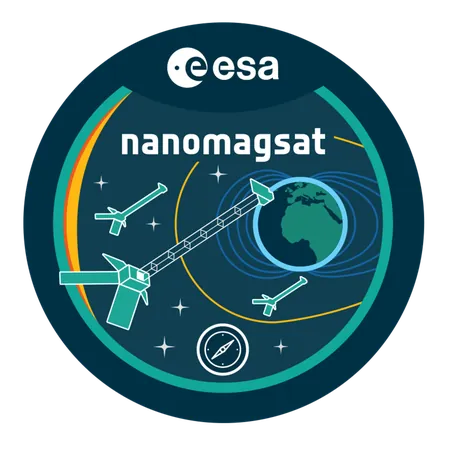
ESA Unveils Revolutionary NanoMagSat Mission with €34.6 Million Contract!
2024-11-27
Author: Mei
ESA Unveils Revolutionary NanoMagSat Mission with €34.6 Million Contract!
In an exciting advancement for Earth observation technology, the European Space Agency (ESA) has awarded a crucial development contract worth €34.6 million for its cutting-edge NanoMagSat project. Designed as part of the ESA's Earth Explorer missions, NanoMagSat showcases the agency's commitment to innovation by employing small satellites that leverage miniaturized space technologies and revolutionary observing methods.
The contract was signed today at the ESA Earth Observation Commercialisation Forum in Frankfurt, Germany, between ESA and Open Cosmos, the UK and Spain-based prime contractors for this ambitious mission. Open Cosmos will collaborate with a consortium of esteemed organizations, including COMET-Aerospace in Spain, CEA-Léti in France, the Technical University of Denmark, the University of Oslo in Norway, and the Institut de Physique du Globe de Paris, along with the Université Paris Cité in France.
ESA’s Director of Earth Observation Programmes, Simonetta Cheli, expressed enthusiasm, stating, "Today marks a significant milestone for the NanoMagSat mission, a constellation of three small satellites. The timeline for these Scout missions is incredibly ambitious, with plans for the first satellite to take flight by late 2027, followed by the other two in 2028."
Rafel Jorda, CEO and co-founder of Open Cosmos Ltd, added, "The NanoMagSat mission represents a significant leap forward in space technology and Earth observation. By miniaturizing advanced instruments and employing innovative approaches, we are not only pushing the boundaries of what small satellites can achieve but also delivering impactful solutions that will deepen our understanding of Earth’s magnetic field."
Each of the NanoMagSat satellites will carry high-tech instruments, including a miniaturized absolute magnetometer affixed to a boom, a high-frequency magnetometer along the boom, a Langmuir probe for measuring electron temperature and density, and two GNSS receivers.
Following the legacy of ESA’s Swarm mission, the data acquired by NanoMagSat will enhance our understanding of magnetic field dynamics and the influence of solar activity within the intricate atmospheric-ionospheric-magnetospheric system.
This project has the potential to revolutionize multiple applications including space weather hazard assessments, improving navigation accuracy, and creating reference models for smartphones and directional drilling operations, along with contributing vital information for the World Magnetic Model.
The implications of this mission stretch far beyond academic curiosity; it signifies a future where increased knowledge of our planet's magnetic mechanics will enhance technology and safety across various industries. Stay tuned as we follow this groundbreaking mission in the coming years!




 Brasil (PT)
Brasil (PT)
 Canada (EN)
Canada (EN)
 Chile (ES)
Chile (ES)
 España (ES)
España (ES)
 France (FR)
France (FR)
 Hong Kong (EN)
Hong Kong (EN)
 Italia (IT)
Italia (IT)
 日本 (JA)
日本 (JA)
 Magyarország (HU)
Magyarország (HU)
 Norge (NO)
Norge (NO)
 Polska (PL)
Polska (PL)
 Schweiz (DE)
Schweiz (DE)
 Singapore (EN)
Singapore (EN)
 Sverige (SV)
Sverige (SV)
 Suomi (FI)
Suomi (FI)
 Türkiye (TR)
Türkiye (TR)